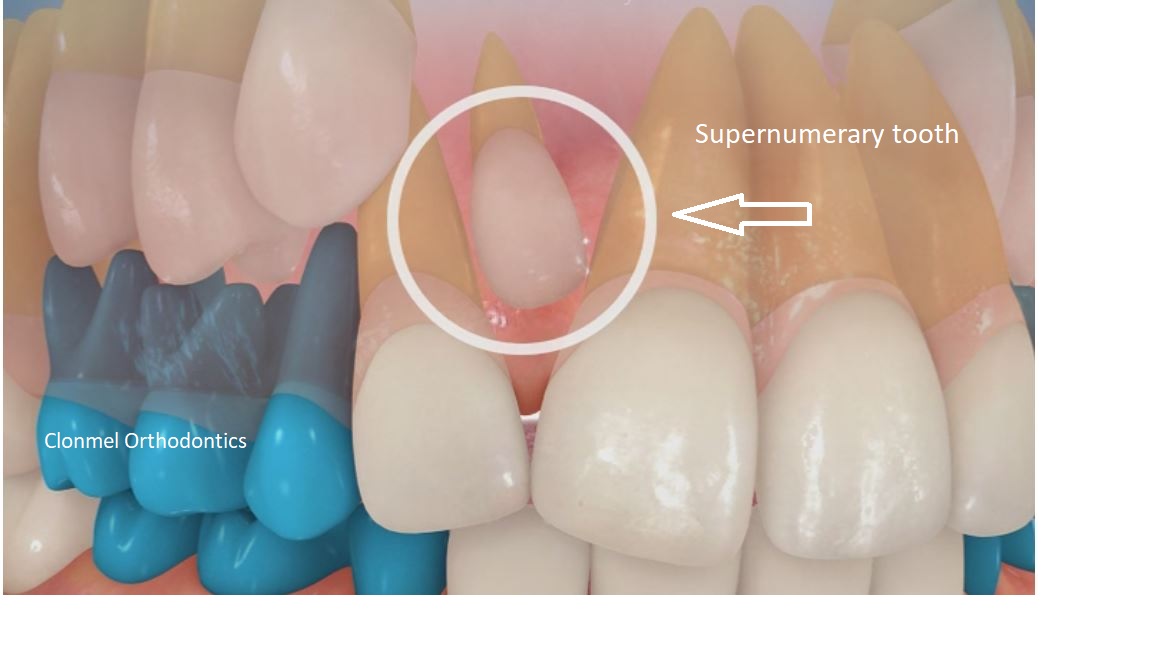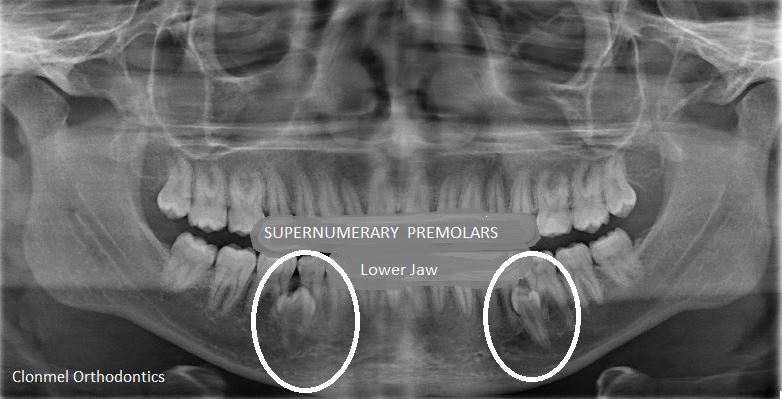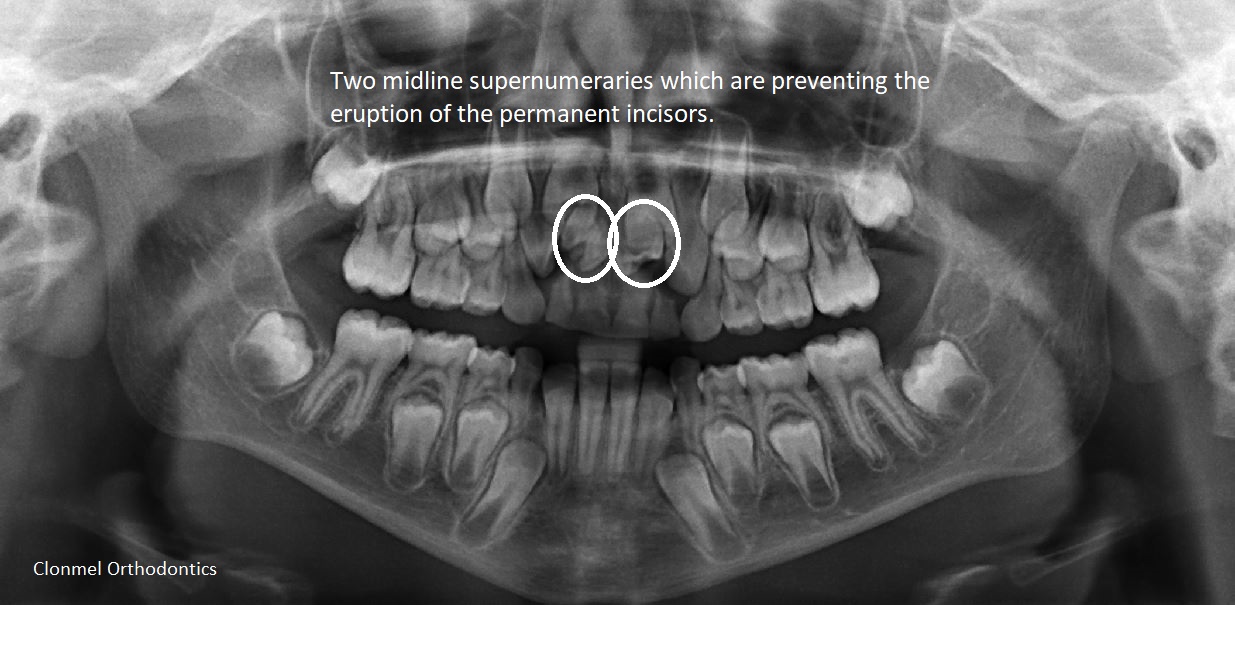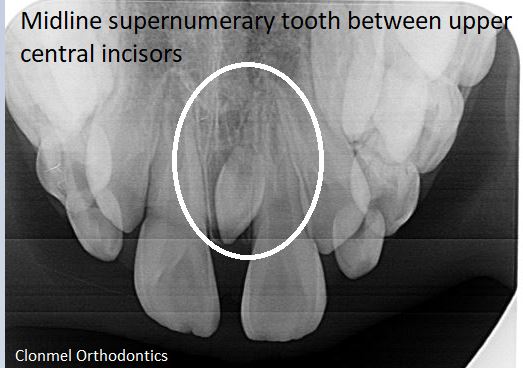Supernumerary teeth are extra teeth which form in addition to the normal complement of teeth. They can occur alone or sometimes there are many supernumeraries. They can occur in both the upper and the lower jaw, and can form either at the front or the back of the jaws. They are quite common and up to 3% of people may have a supernumerary tooth.
The shape and size of supernumerary teeth can vary enormously, they can resemble a normal tooth or be of a completely different shape. Sometimes they are in a normal position other times they are out of place. Often they fail to erupt.

Supernumerary tooth in the upper incisor region.

X-Ray of un-erupted supernumerary premolars.
Unfortunately supernumerary teeth can cause problems. They can prevent the eruption of the normal permanent teeth occurring.

Supernumerary teeth preventing the eruption of the permanent central incisors.
Sometimes supernumeraries can contribute to a gap between the teeth.
Supernumerary teeth can sometimes prevent the orthodontic movement of the other normal teeth, or can damage the other normal teeth by causing resorption. Rarely the unerupted supernumerary teeth themselves can undergo cystic change.
The management of supernumerary teeth varies depending on the circumstances of the individual patient. Quite often the supernumerary tooth will have to be removed. Sometimes the removal of the supernumerary teeth may risk causing damage to the adjacent teeth, or adjacent structures like sensory nerves, and in these circumstances it maybe decided to leave the supernumerary teeth in place and to have them reviewed periodically.
In Clonmel orthodontics we have years of experience in dealing with supernumerary teeth, and will be only too happy to advise you on their management.
……………………………………………………………………………………………………………………………………………………….
This blog was written by Dr John Buckley Clonmel’s most qualified and most experienced orthodontist. We use cutting edge technology in Clonmel Orthodontics to provide excellent orthodontic treatment at affordable prices.Our surgeries are airy spacious and private , like you might expect if you visited a general medical practitioner.
……………………………………………………………………………………………………………………………………………………….
